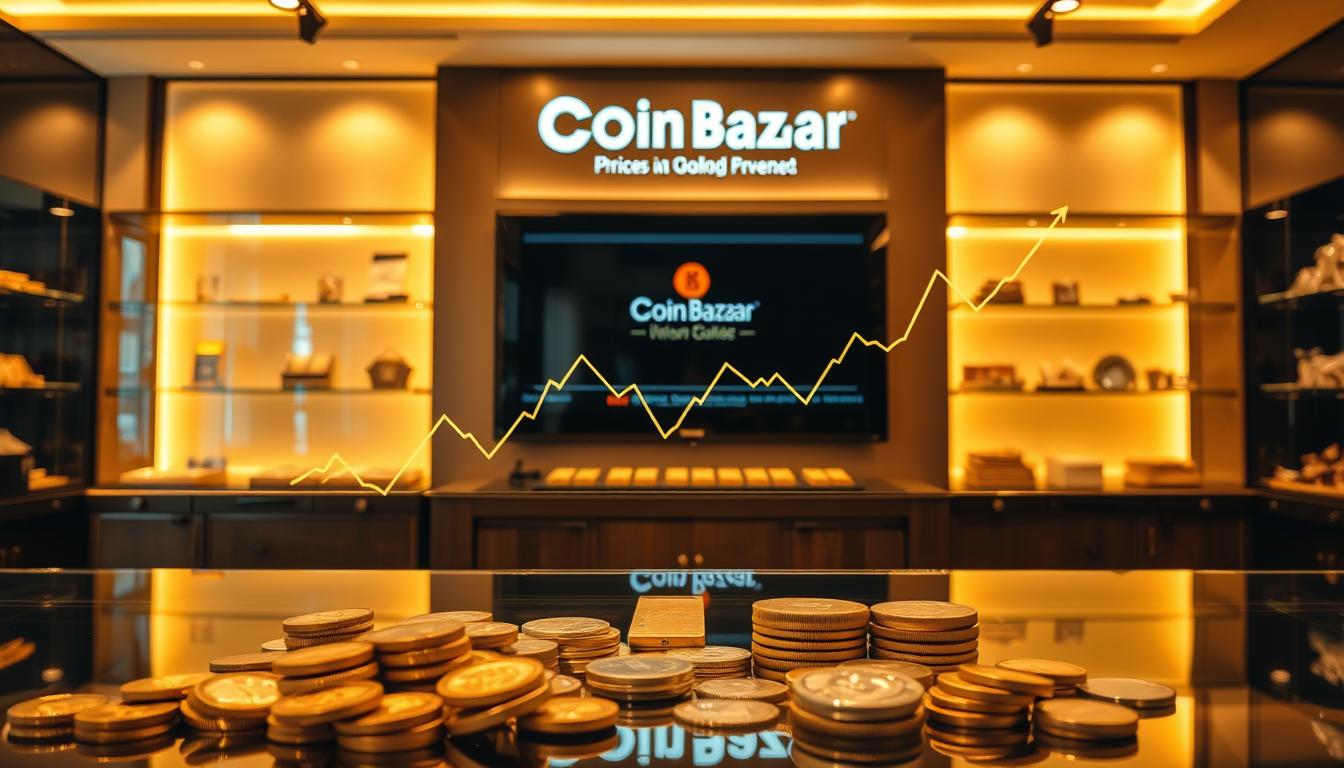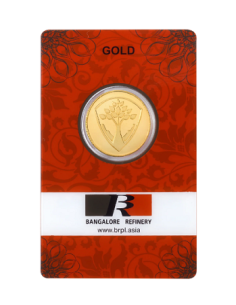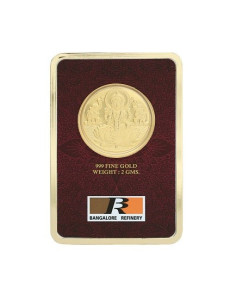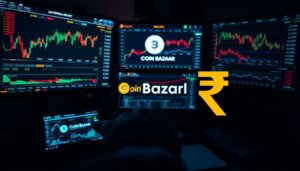Exclusive Deals & Trending Items


Muthoot Pappachan Swarnavarsham Gold BIS Hallmarked Bud Earing of 2 gms in 22 KT 916 Purity Fineness
Shop Now

MMTC PAMP Silver Coin Laxmi Ganesh of 10 Gram in 999.9 Purity in Certicard & Capsule as per availability/Fineness
Shop NowGold Prices in India are influenced by events worldwide. Crises like the 2008 financial crash or the 2020 pandemic make gold prices soar. Investors seek safe assets during these times.
Today, policies from big central banks and global tensions keep Indian markets alert. Your buying decisions depend on watching these changes.
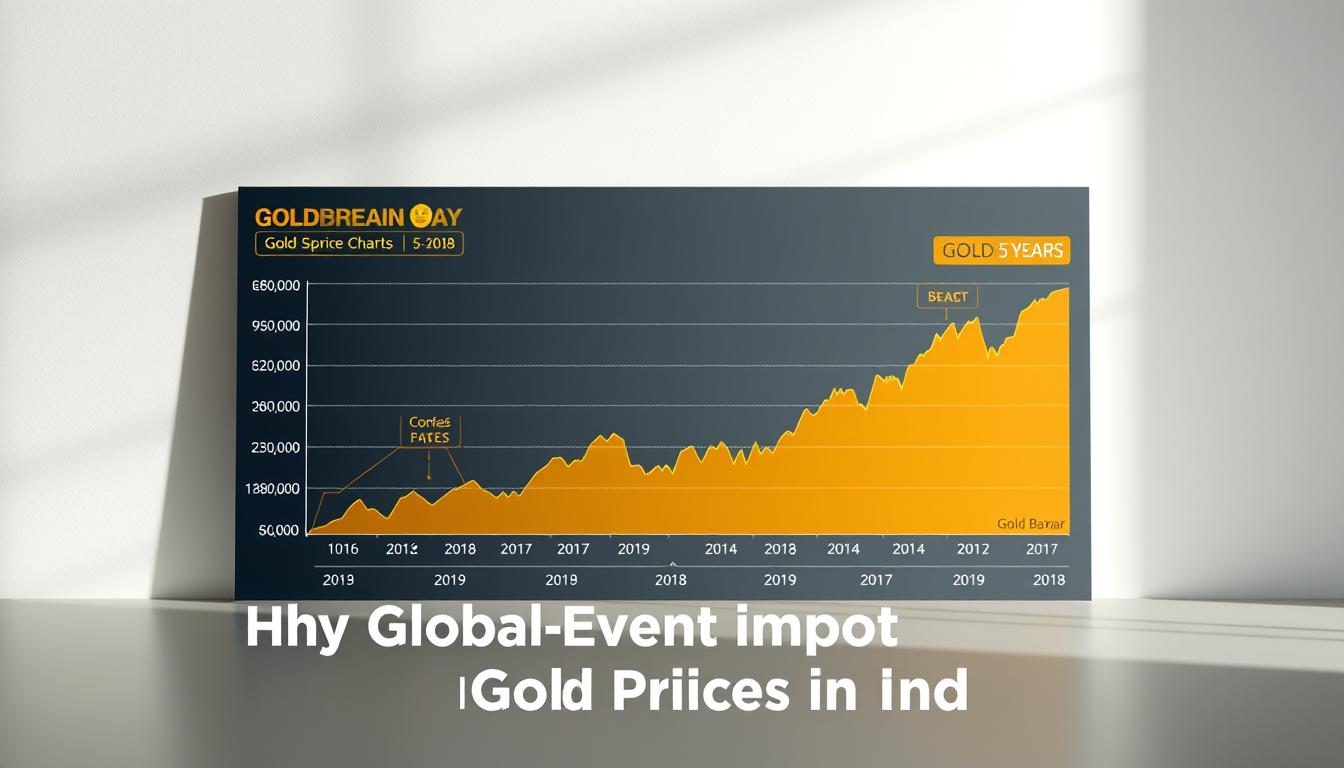

India’s love for gold is deep-rooted in tradition and economics. It makes its markets closely follow global trends. The value of the US dollar, central bank actions, and events like weddings affect prices.
With forecasts suggesting ₹60,000 per 10 grams, keeping up with global changes is crucial. It helps you make better choices.
Key Takeaways
- Global crises like 2008 and 2020 caused sharp rises in Gold Prices in India due to safe-haven demand.
- US Federal Reserve policies and geopolitical shifts directly influence India’s gold prices through global market dynamics.
- Wedding seasons and festivals drive predictable spikes in the price of gold due to cultural demand.
- The US dollar’s strength weakens or strengthens gold rates in India, as global pricing is tied to USD values.
- Analysts project Gold Prices in India could hit ₹60,000 per 10 grams if uncertainties like inflation or conflicts persist.
The Historic Significance of Gold in Indian Culture
Gold is more than a metal in India; it’s a part of the nation’s heart. It’s used in temple donations and passed down as family heirlooms. This cultural importance shapes Gold Prices in India today. Let’s see how traditions affect the current gold rate and your choices.


Gold’s Role in Traditional Celebrations and Ceremonies
- Diwali & Dhanteras: These festivals account for 30% of gold sales each year, increasing demand and prices.
- Weddings: Over 72% of families include gold jewelry in dowries, making it a key expense.
- Religious offerings: The Tirumala Temple alone has 1,500 tonnes of gold, showing faith’s role in steady demand.
The Emotional and Financial Value of Gold for Indian Families
| Emotional Value | Financial Value |
|---|---|
| 96% see gold as auspicious gifts for life events | 92% view it as a hedge against inflation |
| Family jewelry passed through generations | Used as collateral in times of financial stress |
How Gold Consumption in India Compares Globally
| Country | Annual Demand (Tonnes) | Per Capita Purchase |
|---|---|---|
| India | 650+ | High due to cultural practices |
| China | 400 | Investment-driven |
India’s 25% global gold demand share shows local traditions impact global prices. Even with current gold rate changes, cultural ties keep demand strong. Knowing this helps you make smart market choices.
Understanding Current Gold Prices in India
Looking at the gold rate today shows a market that changes a lot. These changes are because of global and local things. For instance, when the rupee drops against the dollar, it makes imports more expensive. This then raises the prices here.
- Start with the London Bullion Market’s base price (USD per ounce)
- Add import duties (12.5%), GST (3%), and dealer margins
- Convert using the INR exchange rate
| City | 22K Gold Rate (INR/10g) | 24K Gold Rate (INR/10g) |
|---|---|---|
| Mumbai | 6,500 | 6,900 |
| Delhi | 6,450 | 6,850 |
| Chennai | 6,480 | 6,880 |
“Gold acts as a hedge during uncertainty,” says a market analyst at Bullion Street. “Demand spikes when inflation rises or geopolitical risks grow.”
Keep an eye on the gold rate today with apps like MyGoldRate or Bank of Baroda’s portal. Remember, 24K gold is pricier because it’s purer. But 22K jewelry is cheaper because it has alloys. Stay updated to make the best choices.
The Global Gold Market: How It Functions
Learning about the global gold market helps you understand price of gold changes in India. London, New York, and Shanghai are the main hubs, making up over 90% of global trading. Their actions affect live gold price trends worldwide, impacting your local market.
Key Trading Centers Shaping Prices
- London: The London OTC market sets daily benchmarks (like the LBMA price) influencing 70% of global trades.
- COMEX (New York): This futures exchange helps investors hedge risks, with Asian trading hours boosting its role.
- Shanghai: The SGE handles most physical gold deals, creating a real-time price reference for Asian buyers.
Who’s Driving the Market?
Central banks, miners, and investors all play a role. When banks buy gold, it boosts demand. Miners’ costs and supply issues can push prices up. Track these factors to understand why price of gold fluctuates.
Pricing Mechanisms Explained
Before 1971, gold was tied to the U.S. dollar. Now, prices reflect real-time supply-demand. Spot prices from London and futures markets (like COMEX) create the live gold price you see daily. Indian prices adjust based on these global benchmarks plus local taxes.
Remember, global shifts in these hubs directly impact India’s local rates. Keep an eye on these centers to stay ahead of market changes.
Economic Indicators That Drive Gold Rate Fluctuations
Economic changes affect Gold Prices in India every day. Looking at a gold rate chart shows how inflation, interest rates, and currency trends impact your investments. Let’s explore the three main forces behind these changes.
Inflation and Its Relationship with Gold Prices
Gold protects against rising prices. When inflation goes up, central banks raise interest rates. This pushes investors to gold to save their money. In the past, like in 2022, Gold Prices in India jumped 15% in just six months.
- Inflation over 7% often leads to buying waves, increasing demand.
- Gold keeps its value better than paper money during price hikes.
Interest Rates: The Inverse Correlation with Gold
When the Reserve Bank of India lowers rates, borrowing costs fall. This makes gold more attractive since it doesn’t earn interest. On the other hand, rising rates cut gold demand as savings go into fixed deposits. For example, a 1% rate hike in 2023 caused a 2% drop in Gold Prices in India within weeks.
- Low interest rates → higher gold demand. High rates → investors move to bonds.
- Watch the gold rate chart for rate changes after RBI policy updates.
Currency Strength and Gold Valuation
A weaker rupee makes imported gold more expensive. When the dollar gets stronger, Gold Prices in India go up, even if global rates don’t change. For instance, a 5% rupee drop in 2021 led to a 10,000 INr per 10g increase locally. Retailers pass these costs to buyers, affecting wedding and festival purchases.
- Rupee-dollar exchange rate directly affects import costs.
- Keep an eye on the gold rate chart and currency trends for accurate forecasts.
Watching these factors helps you make better gold purchase decisions and avoid overpaying. Stay updated to invest wisely.
How International Conflicts Affect the Price of Gold
When global tensions rise, the gold rate today often climbs as investors seek safety. Geopolitical conflicts like the Russia-Ukraine war disrupted global markets, pushing gold to lifetime highs. For instance, in 2022, India saw prices surge ₹1,510 per 10 grams amid supply chain disruptions and energy cost spikes.
Recent missile attacks between Israel and Iran have again highlighted gold’s role as a crisis hedge. The weak rupee and US dollar strength create a seesaw effect on the price of gold. Here’s how it works:
- Wars and sanctions increase uncertainty, boosting gold demand as a safe haven.
- Supply chain delays and energy shortages drive inflation, making gold more valuable.
- Central bank policies and trade barriers amplify market volatility, influencing daily rates.
Historically, during the 2008 crisis, India’s gold prices nearly doubled. Today, indices like the Geopolitical Uncertainty Index (GUI) signal risks—helping you track shifts. Monitor real-time updates via apps to stay ahead of swings caused by conflicts or policy changes.
Stay alert to global headlines and the gold rate today trends. Your investment decisions can adapt as geopolitical storms shape the market’s future.
The Domino Effect: Global Recessions and Gold Investments
When the global economy stumbles, Gold Prices in India often react sharply. Past crises show how recessions trigger shifts in investor behavior. This pushes demand for gold as a safe-haven asset. Let’s explore how these events ripple into local markets.
Case Studies: Major Recessions and Their Impact on Gold Rates
- In 2008, the Lehman Brothers collapse sent gold from $730 to $1,300 by 2010, reflecting panic-driven demand.
- The 2011 European debt crisis pushed gold to $1,825, while India’s Gold Prices in India rose alongside global trends.
- During the 2020 pandemic, gold hit record highs as uncertainty soared, reaching Rs 58,000 per 10g in some months.
Why Investors Flock to Gold During Economic Downturns
- Flight to safety: Gold acts as a hedge against stock market crashes and currency devaluation.
- Inflation fears drive demand—gold often retains value when paper assets falter.
- Low interest rates make gold competitive against bonds, boosting live gold price trends.
Recent trends show mixed signals. While ETFs saw outflows of Rs 4.6 billion in July 2023, rising oil prices and global inflation worries could reignite demand. Monitoring live gold price data helps you stay ahead of market shifts.
Track how global recessions reshape your investment strategy. Use real-time updates to align with these trends and protect your portfolio against uncertainty.
Central Bank Policies and Their Influence on Gold Rates
Central banks, like the Reserve Bank of India (RBI), play a big role in gold prices. When the RBI buys more gold, it increases demand. This makes the current gold rate go up. Looking at a gold rate chart shows how changes in policy affect local markets.
RBI’s Role in Shaping Domestic Markets
The RBI has increased its gold reserves to 840.7 tons. This makes up 11.31% of its foreign exchange holdings. Their strategy, with more purchases in 2024, has:
- Increased global gold prices by 16% so far this year.
- Attracted INR7.3 billion into gold ETFs.
- Made India the third-largest central bank buyer worldwide.
Global Central Banks’ Ripple Effect
Changes by the European Central Bank and China’s PBOC also impact Indian gold rates. Their gold reserves and policy changes cause market ups and downs. For instance:
| Central Bank | Gold Reserves (2024) | 2024 Purchases |
|---|---|---|
| RBI | 840.7 tons | 72.6 tons (year-to-date) |
| Global Peers | ~20,000 tons | 200+ tons (combined) |
Keep an eye on central bank announcements to predict changes. Use the gold rate chart to track how policy shifts affect prices. Investors can adjust their plans by linking RBI’s moves to price trends.
Regional Variations: From Gold Price in Delhi to Mumbai
Gold prices change in Delhi, Mumbai, and Chennai because of local taxes and demand. For example, gold price in Delhi is often higher than in Chennai. This is because Delhi is close to big markets and has more people wanting gold. On the other hand, gold price in Mumbai is influenced by its status as a financial center. Here, shops might offer small discounts to compete.
- Taxes and Duties: State-specific levies add to gold price in Chennai and other regions.
- Transport Costs: Cities farther from import ports pay more for delivery and security.
- Local Demand: Wedding seasons spike gold price in Delhi and Mumbai, where purchases peak yearly.
- Retail Competition: Mumbai’s dense market often lowers margins compared to smaller cities.
Always check prices daily, as gold price in Mumbai and gold price in Chennai change twice a day. This is due to global trends and the Rupee’s value. By comparing prices in different cities, you can save money, especially during festivals or weddings. Use online tools to track prices in real-time and find the best deals.
Seasonal Trends in Gold Prices Across Indian Markets
Seasons have a big impact on Gold Prices in India. Knowing these trends can help you make better choices. Prices often go up during big buying times like weddings and festivals. Let’s look at how the calendar affects your gold purchases.
Wedding Season Demand and Price Patterns
From October to December, weddings are at their peak. This increases demand for gold, making prices go up by 5–10%. In cities like Delhi and Mumbai, prices rise the most during these months.
Festival Impact on 24k Gold Price
- Dhanteras and Diwali in October–November: Prices rise 8–12% due to festive buying.
- Akshaya Tritiya in spring: A second peak for gold purchases, often linked to positive pricing trends.
Buying a week before festivals can save you 3–5% on 24k gold price.
Agricultural Harvest Seasons and Rural Gold Purchases
After harvest, farmers with more money buy gold. This rural demand makes up 60% of India’s gold sales. But, monsoon rains in July–August can make prices drop.
Timing is key. Keep an eye on Gold Prices in India around festivals and weddings. Use apps like MyGoldRate or MintStreet for updates. Try to avoid buying during peak seasons unless tradition is more important to you.
Digital Gold and New Investment Platforms in India
India’s gold market is moving online, making it easier to track the live gold price and invest. Apps like eBullion let you buy or sell gold instantly, starting at just ₹100. These platforms update the current gold rate in real-time, helping you stay on top of global trends.
- Secure storage via third-party vaults with insurance
- 24/7 access via smartphones or desktops
- Instant liquidity with fast bank transfers
Compare top platforms:
| Platform | Minimum Investment | Liquidity | Security |
|---|---|---|---|
| eBullion | ₹100 | Instant | Third-party vaults |
| Sovereign Gold Bonds | ₹4,000 | 6-month lock-in | Government-backed |
| Physical Gold | Varies | Depends on seller | Self-storage risks |
India’s digital gold market could reach $100 billion by 2025. More investors are turning to online platforms. The 2025 budget’s tax cuts have made apps even more appealing, especially since Sovereign Gold Bonds are paused.
Stay updated on the live gold price anytime. Choose from gold ETFs or accumulation plans to grow your wealth safely. These tools help you make informed decisions by tracking global price changes.
How to Track Live Gold Price Updates Effectively
Keeping up with live gold price trends is crucial for making informed choices. Here are some tools to help you track rates and find opportunities:
Reliable Apps and Websites for Current Gold Rate Monitoring
- Mint: Track gold rate chart trends with real-time updates and analysis.
- Moneycontrol: Compare rates across cities and view historical price movements.
- Bank of Baroda’s Portal: Official bank data for accurate live gold price in rupees/gram.
- India Bullion and Jewellers Association (IBJA): Updates from the industry’s leading body.
Understanding Gold Rate Charts for Informed Decisions
Charts show patterns. Here’s what to look for:
| Term | What It Means | Example Use |
|---|---|---|
| Support Levels | Prices often rebound at these levels | Track if prices bounce at Rs 60,000/10g |
| Moving Averages | Show trends over days/weeks | Compare 50-day vs. 200-day averages |
“Monitoring gold rate chart trends helps anticipate demand spikes, like before Diwali or wedding seasons.” – World Gold Council Report 2023
Use these tools with global news alerts. For example, when the US dollar weakens, gold prices often go up. Stay ahead by checking live gold price alongside inflation reports and geopolitical updates.
Government Policies and Taxes Affecting Gold Prices in India
Government policies and taxes greatly influence the price of gold you pay. Import duties and GST make Gold Prices in India higher than global rates. Knowing these factors helps you better understand the costs.
Import Duties and Their Impact on Local Gold Rates
Import duties increase the cost of gold before it hits stores. In 2024, a cut in customs duties lowered gold prices by up to 2%. This shows how policy changes directly impact what you pay at local markets.
For example, when import taxes fall, shops can offer better rates to customers.
GST and Other Tax Implications for Gold Buyers
Gold buyers face GST rates that vary by product type. Here’s a quick guide:
| Product | GST Rate | Details |
|---|---|---|
| Physical Gold (24k/22k) | 3% | Split into 1.5% CGST + 1.5% SGST |
| Gold ETFs/SGB | 3% | Applied on investment amount |
| Jewelry Making Charges | 5% | Added to final jewelry cost |
| Digital Gold | 3% | Same as physical gold |
Jewelry buyers pay an extra 5% GST on making charges, which vary by retailer. Investors in ETFs save on taxes compared to physical gold. Businesses buying gold for resale can claim input tax credits to reduce costs.
Keep an eye on policy updates like the 2024 budget changes. Lower import duties and GST rules mean better pricing options for buyers. Staying informed helps you time purchases during tax-friendly periods.
Forecasting Techniques: Predicting Gold Price Movements
Tracking the gold rate today is more than guessing. Experts rely on three main methods: fundamental, technical, and sentiment analysis. Let’s explore them simply.
- Technical Analysis: Look at the gold rate chart trends. Tools like moving averages or RSI help spot short-term patterns. For example, rising trends often signal buying opportunities.
- Fundamental Analysis: Examine inflation, interest rates, and geopolitical events. If central banks raise rates, gold might dip. But during conflicts, it often climbs as a safe-haven asset.
- Sentiment Analysis: Investor fear or optimism drives prices. During crises, panic buying pushes gold higher.
Recent studies show LSTM models outperform traditional methods like ARIMA. A 2020-2023 analysis using 1304 data points found LSTM reduced forecast errors by 15% compared to ARIMA. The model predicted a steady rise in India’s gold prices, aligning with a 13% annual growth since 2016.
“Gold’s value isn’t just about numbers—it’s about trust,” says a leading economist. “Combine data with real-world events for better predictions.”
Here are some tips to stay ahead:
- Check the gold rate today via trusted apps like Moneycontrol or LiveMint.
- Study gold rate charts to spot long-term trends.
- Follow central bank policies and geopolitical news.
While no method is perfect, blending these approaches helps you plan smarter. Stay informed to make decisions that fit your goals.
Creating Your Personal Gold Investment Strategy
Managing your gold investments means matching them with your financial goals and how much risk you can take. Keep up with Gold Prices in India and how global events affect local markets.
Short-term vs. Long-term Gold Investment Approaches
Decide if you want quick profits or slow but steady growth:
- Short-term: Use apps to track 24k gold price changes. Look for market swings during crises or big political changes.
- Long-term: Invest in Sovereign Gold Bonds (SGBs) for tax-free returns over 8 years. SGBs have issued 67 tranches, offering stability.
Diversification: Gold as Part of Your Portfolio
Gold’s low volatility makes it a solid hedge. Put 10-15% of your portfolio in gold to balance stocks and bonds. Here’s a comparison of top choices:
| Option | Pros | Cons |
|---|---|---|
| Physical Gold | Immediate liquidity, tangible asset | Storage costs, 24k gold price premiums |
| Gold ETFs | No storage fees, tax efficiency after 1 year | Less control over physical metal |
| SGBs | Tax-free maturity gains, 14.7 crore units issued | 5-year lock-in |
Best Practices for Buying Physical Gold in India
Follow these steps for smart gold purchases:
- Check 24k gold price with certified jewelers and look for BIS hallmarks for purity.
- Buy during festivals like Diwali when prices might drop due to high demand.
- Store in bank lockers to avoid theft risks—physical gold faces 0.25% annual storage fees.
Common Misconceptions About Gold Price Fluctuations
Tracking the gold rate today isn’t just about checking numbers. Many myths confuse buyers. Let’s clear them up.
“Gold isn’t a magic shield—it’s just one tool in your financial toolkit,” says a certified financial planner in Mumbai.
- Myth 1: Gold always rises during inflation. Fact: In stable economies, stocks or bonds might outperform.
- Myth 2: Gold prices never fall. Reality: From 2013–2015, global price of gold dropped 30% despite no crisis.
- Myth 3: International rates = India’s prices. Truth: India’s gold rate today also depends on taxes, imports, and local demand.
Take the 1972 example: $100 in gold grew to $4,500 by 2024, but the same $100 in stocks (S&P 500) hit $18,500. Gold isn’t always the winner. Rural demand, making 60% of India’s purchases, spikes after good monsoons—proving local factors matter too.
Stay smart: Check the gold rate today via apps, not myths. And remember—no single asset guarantees growth every time.
Conclusion: Navigating the Complex World of Gold Prices in a Global Economy
Understanding what affects Gold Prices in India is crucial for making wise choices. Global conflicts, interest rate changes, and inflation are just a few factors. These elements, along with currency swings and central bank policies, shape the current gold rate.
The 2020 pandemic saw prices reach Rs. 48,651, while 2023’s peak hit Rs. 76,160. These changes show gold’s importance in both culture and finance.
Seasonal trends, like wedding seasons, and economic policies, such as import duties, also influence prices. Keeping up with real-time tracking tools helps you stay on top of market changes worldwide. Whether you’re investing or buying jewelry, understanding global markets and local traditions is key.
As the Indian economy grows, tracking the current gold rate and global trends is essential. This knowledge helps in making informed decisions about gold.
Gold’s value goes beyond numbers—it’s deeply tied to India’s culture and economy. By combining traditional knowledge with modern data, you can better handle price changes. Tools like live price apps and market analysis prepare you for the changing landscape.






